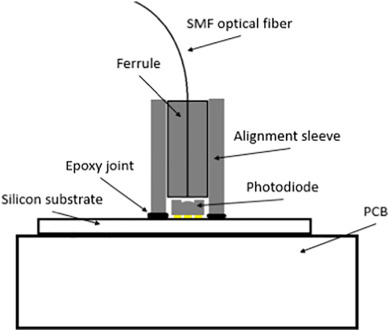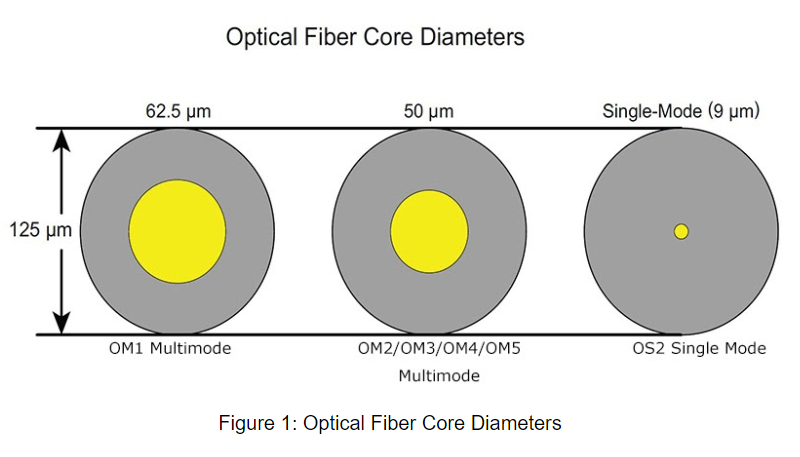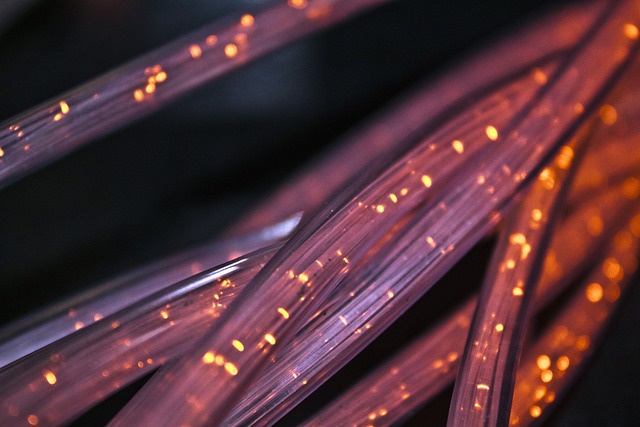Today's digital world demands high-speed and reliable data transmission at all times, leading to rapid development and adoption of fiber optic networks that revolutionized long-distance data transmission. Fiber optic networks boast numerous advantages over copper-based systems, making them the go-to choice among telecom companies, ISPs, data centers and other industries.
What exactly are fiber optic networks, and how do they function?
At its core, a fiber optic network is a communication system that uses optical fibers to send light signals over long distances. Each fiber consists of a core which carries light signals as well as an outer cladding which protects it.
Fiber optic networks use total internal reflection to guide and transmit light signals, unlike traditional copper cables which use electrical transmission methods. This phenomenon occurs when light traveling through the core strikes an interface of the cladding at an exact angle and bounces back into its source; effectively transmitting it across long distances without significant loss or degradation.
Fiber optic networks utilize pulses of light that represent binary digits, or bits. These light pulses, usually generated by lasers or light emitting diodes (LED), are encoded with information and sent through fiber optic cables at incredible speeds that approach lightspeed to enable high-bandwidth data transmission.
One of the greatest advantages of fiber optic networks is their ability to reliably transmit data over long distances without signal degradation. While electrical signals in copper cables may experience attenuation and electromagnetic interference, light signals in fiber optic networks experience minimal loss while remaining immune to electromagnetic interference - this characteristic makes data transmission reliable over vast distances, making fiber optic networks perfect for intercontinental communications or undersea cables.
Fiber optic networks boast impressive bandwidth capacities that surpass those of copper cables, providing faster internet speeds, efficient video streaming services, seamless cloud computing environments, and advanced telecommunication services.
Fiber optic networks also provide enhanced security for data transmission. Unlike copper cables that can easily be intercepted or tapped into, fiber optic cables don't emit electromagnetic signals that can easily be picked up by hackers and interceptors - this makes fiber optic networks highly resistant to eavesdropping and data breaches, safeguarding sensitive information against theft or breach.
Fiber optic networks have revolutionized the way data is transmitted, offering unparalleled speed, security, and reliability. Understanding the basics of how fiber optic networks work is crucial to grasp their advantages and future potential. This article explores the fundamentals of fiber optic networks, delves into the advantages they offer, examines the different types of fiber optic cables, explains the role of photodiodes in data transmission, and provides insights into the future trends shaping this technology.

Figure : Credit: sciencedirect.com/science/article/pii/S0026271417305103
How Fiber Optic Networks Work: Exploring the Basics
Fiber optic networks operate on the principle of transmitting data through pulses of light. The core component of these networks is the optical fiber, which is a hair-thin strand made of a special type of glass or plastic. Light signals carrying data are injected into the fiber through a transmitter, typically a laser or light-emitting diode (LED). The light signals travel through the fiber by repeatedly reflecting off the cladding, which surrounds the core of the fiber. This process, known as total internal reflection, ensures that the light signals propagate within the fiber without significant loss or degradation.
Advantages of Fiber Optic Networks: Speed, Security, and Reliability
Fiber optic networks offer several advantages over traditional copper-based systems. Firstly, they provide unparalleled speed, allowing for the rapid transmission of large amounts of data. The high bandwidth of optical fibers enables seamless video streaming, fast internet connectivity, and efficient cloud computing services.
Secondly, fiber optic networks excel in security. Unlike copper cables, which emit electromagnetic signals that can be intercepted, fiber optic cables do not radiate such signals, making them highly resistant to eavesdropping and data breaches. This inherent security feature ensures the confidentiality and integrity of sensitive information.
Thirdly, fiber optic networks are incredibly reliable. They are immune to electromagnetic interference, enabling them to deliver consistent performance even in environments with high electrical noise. Additionally, optical fibers are not susceptible to corrosion or environmental factors, ensuring long-term stability and minimizing maintenance requirements.
Types of Fiber Optic Cables: Single-mode vs. Multimode
Fiber optic cables come in two primary types: single-mode and multimode. Single-mode fibers have a smaller core diameter, allowing for the transmission of a single light signal, or mode, over long distances. These fibers are ideal for long-haul telecommunications and intercontinental data transmission.

Figure : Credit: community.fs.com/blog/single-mode-cabling-cost-vs-multimode-cabling-cost.html
On the other hand, multimode fibers have a larger core diameter, enabling the transmission of multiple light signals simultaneously. They are commonly used for shorter-distance applications, such as local area networks (LANs) and data centers.
Photodiodes in Fiber Optic Networks: Detecting Light for Data Transmission
Photodiodes play a crucial role in fiber optic networks by converting light signals back into electrical signals for further processing. These semiconductor devices are placed at the receiving end of the fiber optic link. When light signals enter the photodiode, they generate a proportional electrical current, which carries the transmitted data. This current is then amplified and processed to retrieve the original information. PIN photodiode can be seen as application of fiber optic networks to convert optical signals into electrical signals for transsmission and detection.
Future Trends in Fiber Optic Networks: 5G, Internet of Things, and Beyond
The future of fiber optic networks looks promising, with emerging technologies driving their expansion and capabilities. One significant trend is the integration of fiber optic networks with 5G technology. As 5G networks continue to roll out worldwide, fiber optic infrastructure will be crucial to support the massive data traffic and low latency requirements of 5G applications.
Another area of growth is the Internet of Things (IoT). With the increasing number of connected devices, fiber optic networks will serve as the backbone for IoT data transmission, ensuring fast and reliable connectivity for smart homes, cities, and industries.
Furthermore, advancements in fiber optic technology, such as denser wavelength division multiplexing (DWDM) and coherent transmission, will continue to enhance network capacity and data rates, facilitating the growing demand for high-bandwidth applications.


No comments yet